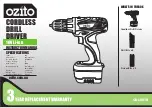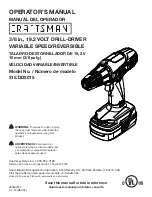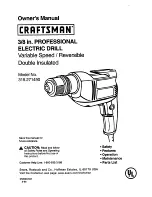
English |
19
Bosch Power Tools
2 609 140 727 | (18.1.10)
Declaration of Conformity
We declare under our sole responsibility that
the product described under “Technical Data” is
in conformity with the following standards or
standardization documents: EN 60745 accord-
ing to the provisions of the directives
2004/108/EC, 2006/42/EC.
Technical file at:
Robert Bosch GmbH, PT/ESC,
D-70745 Leinfelden-Echterdingen
Robert Bosch GmbH, Power Tools Division
D-70745 Leinfelden-Echterdingen
08.12.2009
Assembly
Battery Charging
A battery that is new or has not been used for a
longer period does not develop its full capacity
until after approx. 5 charging/discharging cy-
cles.
To remove the battery
6
press the unlocking but-
tons
7
and pull out the battery downwards.
Do
not exert any force.
The battery is equipped with a NTC temperature
control which allows charging only within a tem-
perature range of between 0 °C and 45 °C. A
long battery service life is achieved in this man-
ner.
A significantly reduced working period after
charging indicates that the battery is used and
must be replaced.
Observe the notes for disposal.
Changing the Tool (see figure A)
f
Before any work on the machine (e. g.,
maintenance, tool change, etc.) as well as
during transport and storage, set the rota-
tional direction switch to the centre posi-
tion.
Unintentional actuation of the On/Off
switch can lead to injuries.
The drill spindle is locked when the On/Off
switch
9
is not pressed. This makes quick, con-
venient and easy changing of the tool in the drill
chuck possible.
Open the keyless chuck
1
by turning in rotation
direction
n
, until the tool can be inserted. Insert
the tool.
Firmly tighten the collar of the keyless chuck
1
by hand in rotation direction
o
until the locking
action (“click”) is no longer heard. This automat-
ically locks the chuck.
The locking is released again to remove the tool
when the collar is turned in the opposite direc-
tion.
Dust/Chip Extraction
f
Dusts from materials such as lead-containing
coatings, some wood types, minerals and
metal can be harmful to one’s health. Touch-
ing or breathing-in the dusts can cause aller-
gic reactions and/or lead to respiratory infec-
tions of the user or bystanders.
Certain dusts, such as oak or beech dust, are
considered as carcinogenic, especially in
connection with wood-treatment additives
(chromate, wood preservative). Materials
containing asbestos may only be worked by
specialists.
– Provide for good ventilation of the work-
ing place.
– It is recommended to wear a P2 filter-
class respirator.
Observe the relevant regulations in your
country for the materials to be worked.
Dr. Egbert Schneider
Senior Vice President
Engineering
Dr. Eckerhard Strötgen
Head of Product
Certification
OBJ_BUCH-1124-002.book Page 19 Monday, January 18, 2010 3:48 PM
















































